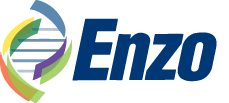During the regulatory approval process that included a comprehensive review of the clinical protocol and safety features of the vector by the CHR, U.S Food and Drug Administration (FDA) and the Recombinant DNA Advisory Committee (RAC) of the National Institutes of Health, all manufacturing protocols were established and subject management and extensive cell preparation protocols were optimized.
In the upcoming trial, which is expected to get underway shortly, Enzo’s StealthVector® HGTV43™ gene construct will be used to transfer three antisense genes designed to interfere with the growth of HIV-1 into blood stem cells. These cells are expected to replicate and differentiate within the body of the HIV-1 infected individual to produce CD4+ T-cells, the main target of infection by HIV-1. The novel aspect of the current study is to increase the percentage of CD4+ cells that contain the anti-HIV-1 antisense genes with a protocol designed to partially reduce the patient’s blood stem cells before infusion of the engineered cells. The trial is intended to determine whether this procedure will create a supply of HIV-1 resistant CD4+ cells large enough to materially defer the disease progression of these HIV-1 infected individuals into AIDS
The Phase I study that took place at UCSF demonstrated the safety of the procedure and showed that the engineered stem cells were able to survive long term in vivo and to produce a low number of CD4+ cell progeny containing functioning antisense genes. Although there was no increase in the CD4+ cell count or reduction in the viral load, the yield of engineered cells has remained approximately constant over a number of years, in the case of one individual for as long as five years, supporting the conclusion that stable engraftment of anti-HIV-1 antisense RNA-producing blood stem cells occurred and the antisense genes continued to function.
“We look forward to moving into this next phase of the trial, the goal of which is to increase the proportion of immune cells containing anti-HIV-1 antisense genes, and possibly block the progressive loss of immune competence that characterizes the progression into AIDS,” commented Dean L. Engelhardt, Ph.D., Executive Vice President of Enzo. “This approach could add a much needed option in the management of HIV infection.”
The HGTV43™ vector was developed by Enzo to include a proprietary delivery system designed to overcome a major challenge in gene medicine, namely the efficient and safe delivery of the medicine to the appropriate target. The benefits of Enzo’s “Stealth” vector technology are that it achieves efficient delivery of the genes into the patient’s cells, and that it is “silent” and unlikely to trigger an immune response. In addition, during the development of the vector two critical safety features were incorporated to minimize the possibility of inadvertently turning on deleterious genes in the subject.
“The Phase I trial demonstrated the safety of the HGTV43™ gene construct in 5 subjects and the ability of the engineered cells to survive and continue to function in vivo. Enzo has worked diligently, conducting extensive testing designed to assure the safety of our medicine, to reach this stage,” commented Dr. Engelhardt. “Now, as we begin the next phase of study, we can look back and take great pride that we have advanced to this level of development, a feat few others have accomplished. The sustained expression of our HGTV43™ gene construct in circulating CD4+T-cells strengthens our belief that this gene therapy protocol could function as a once in a lifetime treatment.”
About Enzo
Enzo Biochem is engaged in the research, development and manufacture of innovative health care products based on molecular biology and genetic engineering techniques, and in providing diagnostic services to the medical community. The Company's proprietary labeling and detection products for gene sequencing and genetic analysis are sold to the life sciences market throughout the world. The Company's therapeutic division is in various stages of clinical evaluation of its proprietary gene medicine for HIV-1 infection and its proprietary immune regulation medicines for hepatitis B and hepatitis C infection and for Crohn's Disease. Pre-clinical research is being conducted on several candidate compounds aimed at producing new mineral and organic bone, including technology that could provide therapy for osteoporosis and fractures, among other applications. The Company also holds a patent covering a method and materials for correcting point mutations or small insertions or deletions of genetic material that would allow for editing and correcting certain abnormalities in genes. The Company owns or licenses over 200 patents worldwide. For more information visit our website www.enzo.com.
Except for historical information, the matters discussed in this news release may be considered "forward-looking" statements within the meaning of Section 27A of the Securities Act of 1933, as amended and Section 21E of the Securities Exchange Act of 1934, as amended. Such statements include declarations regarding the intent, belief or current expectations of the Company and its management. Investors are cautioned that any such forward-looking statements are not guarantees of future performance and involve a number of risks and uncertainties that could materially affect actual results. The Company disclaims any obligations to update any forward-looking statement as a result of developments occurring after the date of this press release.
